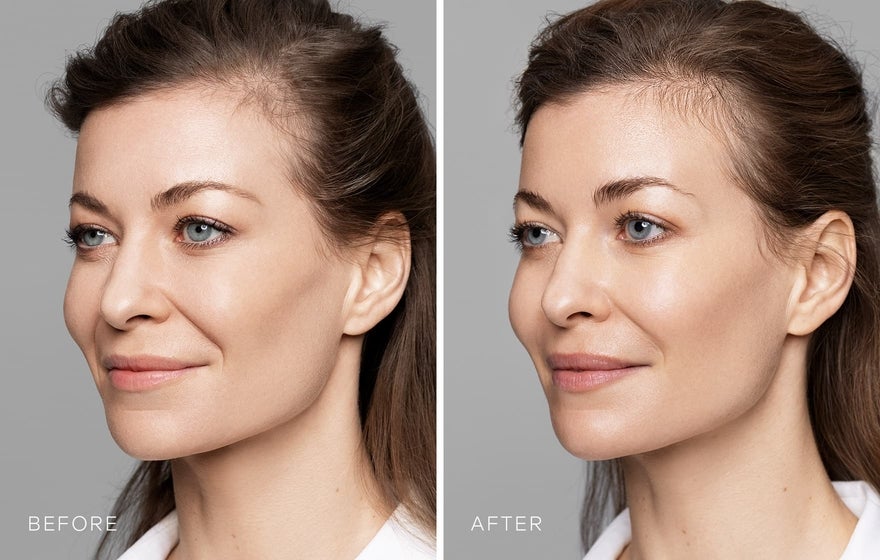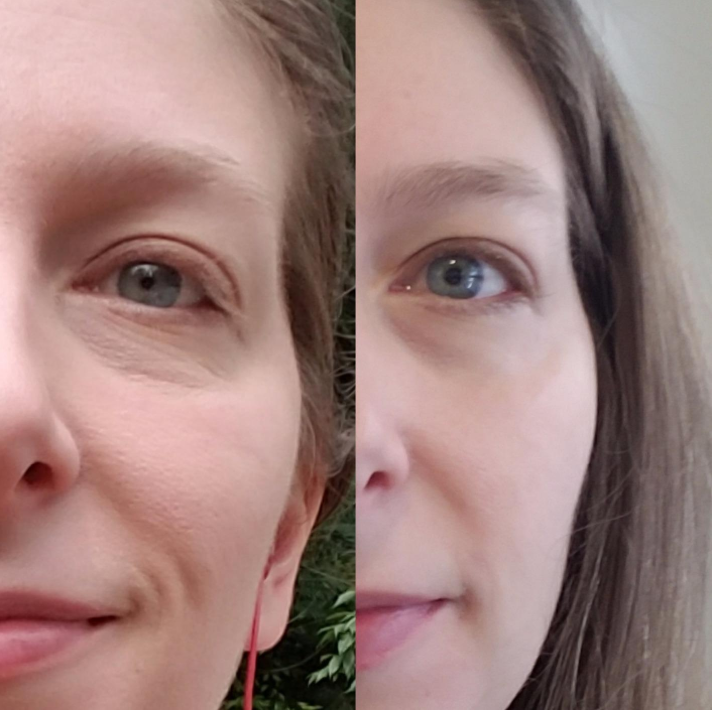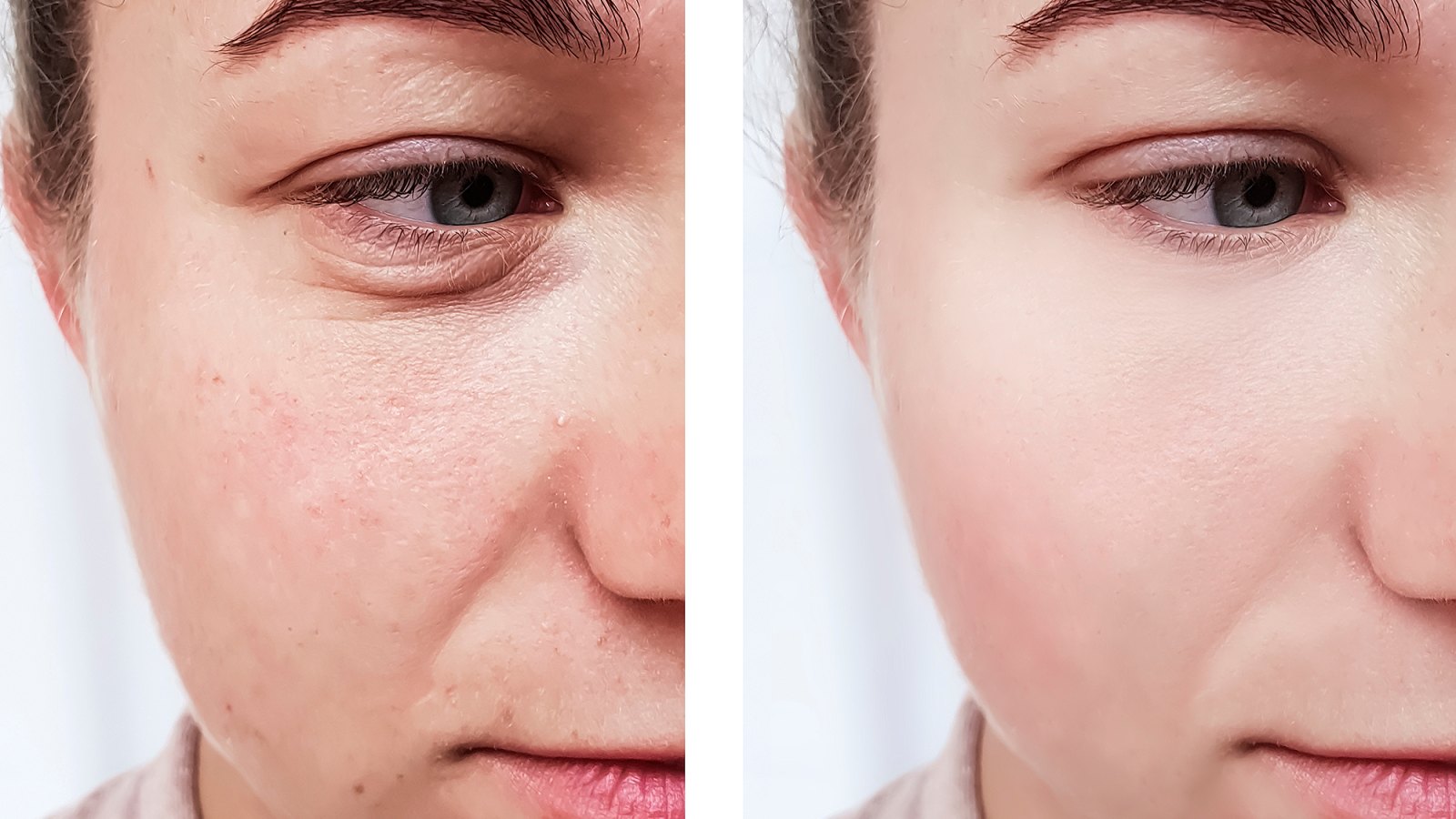Hyaluronic acid before and after is a journey that many are eager to embark upon, seeking the transformative effects this powerful ingredient can have on skin health. From hydration to anti-aging properties, hyaluronic acid has emerged as a superstar in the realm of skincare, capturing the attention of both consumers and dermatologists alike. This article delves into every aspect of hyaluronic acid, exploring its science, benefits, potential side effects, and much more in order to assist you in understanding why it is regarded as an essential component of contemporary skincare regimens.
Table of Contents
ToggleIntroduction to Hyaluronic Acid

Understanding hyaluronic acid necessitates a look at its history as well as its scientific credentials. The compound has gained popularity not only for its undeniable benefits but also for its versatility in various forms of application.
What is Hyaluronic Acid?
Hyaluronic acid is a naturally occurring substance found in the body, primarily in connective tissue, skin, and cartilage. It is known for its ability to hold onto moisture, making it invaluable for maintaining skin hydration and elasticity. Scientifically, it is classified as a glycosaminoglycan, which plays a crucial role in retaining water, lubricating joints, and promoting cellular functions.
In terms of skincare, hyaluronic acid is often lauded for its hydrating properties. Its molecules can hold up to a thousand times their weight in water, making it an excellent choice for anyone looking to enhance their skin’s moisture levels.
Historical Context and Use in Skincare
Historically, the use of hyaluronic acid can be traced back to the 1930s when it was first isolated from rooster combs. However, it wasn’t until the late 20th century that it began gaining traction in the world of skincare. Dermatologists and cosmetic companies soon realized its potential for revitalizing aging skin and addressing dryness.
Today, hyaluronic acid is a staple ingredient in countless skincare products, ranging from serums to moisturizers and even injectables like dermal fillers. Its rise to fame can largely be attributed to ongoing research highlighting its effectiveness and versatility.
The Science Behind Hyaluronic Acid

To truly appreciate hyaluronic acid’s benefits, it helps to delve into its molecular structure and the function it performs within our skin.
Molecular Structure and Properties
Hyaluronic acid is a large, water-soluble molecule with unique properties that allow it to attract and retain moisture. Its structure consists of long chains of disaccharides, which contribute to its gel-like consistency.
This molecular design is what makes hyaluronic acid so effective in skincare—the larger molecules create a protective barrier on the skin’s surface, while smaller molecules can penetrate deeper layers, ensuring comprehensive hydration.
How Hyaluronic Acid Functions in the Skin
When applied topically, hyaluronic acid interacts with the skin by binding to water molecules, enhancing overall hydration levels. This function not only improves skin texture but also promotes the production of collagen and elastin, two vital proteins responsible for skin firmness and elasticity.
As we age, our natural levels of hyaluronic acid decline, leading to dryness and wrinkles. By incorporating hyaluronic acid into skincare routines, individuals can replenish lost moisture, thereby improving skin health and appearance.
Benefits of Using Hyaluronic Acid

The benefits of hyaluronic acid extend beyond mere hydration. Its multifunctionality makes it an attractive option for diverse skin types and concerns.
Hydration and Moisture Retention
One of the most significant benefits of hyaluronic acid lies in its unparalleled ability to hydrate the skin. When applied, it works efficiently to draw moisture from the environment into the skin, contributing to a plump, youthful appearance.
Moreover, hyaluronic acid acts as a humectant, meaning it helps retain moisture over extended periods. This characteristic is particularly beneficial in dry climates or during colder months when moisture levels tend to drop.
Anti-Aging Effects
Hyaluronic acid exhibits remarkable anti-aging properties, making it a go-to ingredient for those seeking to combat visible signs of aging. By boosting hydration, it minimizes the appearance of fine lines and wrinkles, promoting a smoother, more youthful complexion.
Additionally, the enhancement of collagen production aids in restoring skin elasticity, further contributing to a firmer appearance. Many users report significant improvements in skin plumpness and texture after consistent use.
Enhanced Skin Texture and Tone
Another notable benefit of hyaluronic acid is its capacity to improve overall skin texture and tone. Regular application can result in a more balanced complexion, reducing uneven patches and dullness.
Furthermore, hyaluronic acid has soothing properties that can help calm irritation and redness, making it suitable for sensitive skin types. This quality allows individuals with conditions such as rosacea or eczema to incorporate it safely into their routines.
Soothing Properties for Sensitive Skin
For those with sensitive skin or conditions that provoke irritation, hyaluronic acid acts as a gentle remedy. Its soothing nature can alleviate inflammation and discomfort, providing relief without causing additional sensitivity.
By creating a protective barrier on the skin, hyaluronic acid can prevent trans-epidermal water loss, allowing sensitive skin types to maintain hydration levels without further aggravation.
Different Forms of Hyaluronic Acid Products

Hyaluronic acid is available in various formulations, each catering to different preferences and needs. Understanding these options can help you choose the best product for your skin type.
Serums and Concentrates
Hyaluronic acid serums are among the most popular forms of this ingredient. They typically contain a higher concentration of active ingredients, allowing for enhanced absorption and effectiveness.
Serums can be applied directly to the skin after cleansing and before moisturizing for optimal results. Their lightweight texture makes them suitable for layering with other skincare products, enhancing their hydrating benefits.
Creams and Moisturizers
For those who prefer a more traditional approach, there are numerous creams and moisturizers infused with hyaluronic acid. These products provide lasting hydration while also forming a protective layer on the skin’s surface.
Moisturizers containing hyaluronic acid are perfect for locking in moisture throughout the day and can be used alone or layered with serums for added efficacy.
Injectable Treatments
Hyaluronic acid is also utilized in injectable treatments, such as dermal fillers, to restore volume and reduce the appearance of fine lines. These procedures provide immediate results and can last anywhere from six to eighteen months, depending on the formulation used.
While injectables may require professional administration, they represent another powerful avenue through which individuals can experience the benefits of hyaluronic acid.
Tablets and Supplements
Beyond topical applications, hyaluronic acid supplements have gained popularity as oral capsules designed to promote hydration from within. These supplements claim to support skin elasticity and overall joint health.
While scientific studies on the effectiveness of oral hyaluronic acid are still emerging, many users report positive experiences and consider it a valuable addition to their skincare routine.
Incorporating Hyaluronic Acid into Your Skincare Routine

Successfully integrating hyaluronic acid into your skincare regimen can yield excellent results, but knowing how to apply it correctly is key.
Best Practices for Application
For maximum efficacy, hyaluronic acid should be applied to damp skin. After cleansing, use a toner or simply mist your face with water to provide moisture before applying your chosen hyaluronic acid product. This practice allows the ingredient to bind effectively to the existing water content, amplifying its hydrating capabilities.
Additionally, always follow up with a moisturizer to lock in the hydration provided by hyaluronic acid. This step is crucial, especially for those with drier skin types, as it prevents moisture loss throughout the day.
Layering with Other Skincare Ingredients
Hyaluronic acid excels when layered with other beneficial ingredients. For instance, combining it with vitamin C can brighten the complexion while providing hydration; similarly, pairing it with retinol can enhance skin renewal without causing excessive dryness.
However, it’s important to be mindful of how various products interact. Start slowly by introducing new ingredients one at a time and monitor your skin’s response to avoid irritation.
Frequency of Use for Optimal Results
Most individuals can use hyaluronic acid daily—both morning and night—to reap the full spectrum of its benefits. However, those with particularly sensitive skin may want to start with less frequent applications to gauge their tolerance.
Consistency is key in skincare. To see noticeable results, commit to using hyaluronic acid products regularly over time.
Expected Results: Before and After Usage

Many users wonder about the timeline for seeing tangible improvements in skin condition and appearance after beginning to incorporate hyaluronic acid into their routines.
Timeline for Visible Changes
While individual experiences may vary, many users notice improvements within a few days to weeks of regular use. Initial changes often include increased hydration and a dewy finish.
More significant transformations, such as improved texture and reduced fine lines, typically become evident after several weeks of consistent application. Users are encouraged to be patient, as skin rejuvenation is a gradual process.
Typical Transformations in Skin Appearance
As users incorporate hyaluronic acid, they commonly report a plumper and more radiant appearance. Fine lines begin to diminish, giving way to smoother skin, while overall texture and tone appear refined.
With continued use, some individuals experience lasting benefits that significantly elevate their confidence in their skin’s appearance.
Factors Influencing Results
Several factors can influence the effectiveness of hyaluronic acid, including skin type, age, and environmental conditions. For example, individuals living in arid climates may need to adjust their usage to account for increased moisture loss from the skin.
It’s also worth noting that the quality and concentration of the hyaluronic acid product can affect results. Higher concentrations tend to yield more pronounced outcomes.
Real-Life Testimonials and Case Studies about Hyaluronic Acid
Hearing from actual users provides invaluable insight into the efficacy of hyaluronic acid and the myriad ways it can transform skin health.
Success Stories from Users
Countless testimonials highlight stories of transformation, with individuals expressing enthusiasm for the visible changes they’ve experienced. From dramatic hydration to the smoothing of fine lines, users recount their satisfaction with incorporating hyaluronic acid into their routines.
Many stories detail how individuals with previously dry or aged skin saw remarkable improvements, prompting them to recommend hyaluronic acid to friends and family.
Before and After Images Analysis
Before and after images serve as compelling evidence of hyaluronic acid’s impact on skin health. Numerous online platforms showcase user-submitted pictures demonstrating the marked differences in hydration, texture, and overall appearance.
These visual representations often reinforce the notion that hyaluronic acid can lead to significant improvements, motivating others to experiment with incorporating it into their skincare regimens.
Common Experiences and Feedback
Common themes arise in user feedback regarding hyaluronic acid, including its ease of use and compatibility with other products. Users frequently mention how quickly their skin absorbs the ingredient, leading to an immediate sense of comfort and hydration.
Many individuals also note that the non-greasy, lightweight feel makes it an ideal choice, even for oily skin types. Overall satisfaction rates remain high as users celebrate their newfound glow and refreshed skin.
Potential Side Effects and Considerations of Hyaluronic Acid
While hyaluronic acid is widely regarded as safe and effective, it is essential to acknowledge potential side effects and considerations before incorporating it into your routine.
Allergic Reactions and Sensitivities
Though rare, some individuals may experience allergic reactions or sensitivities to hyaluronic acid products. Symptoms may include redness, itching, or swelling.
It’s advisable to perform a patch test prior to widespread use, especially for those with known sensitivities. Should adverse reactions occur, discontinue use and consult with a dermatologist.
Overuse and Skin Imbalances
Using excessive amounts of hyaluronic acid can lead to skin imbalances. For instance, relying solely on hyaluronic acid without sufficient occlusives may cause moisture loss, particularly in dry environments.
To avoid overuse, be cautious with layering multiple hyaluronic acid products. Instead, consider using it in conjunction with a well-rounded skincare routine that addresses varying skin needs.
Consultation with Dermatologists
If you’re uncertain about integrating hyaluronic acid into your regimen, consider consulting a dermatologist. They can provide personalized advice based on your specific skin type and concerns, recommending tailored products that suit your needs.
Additionally, dermatologists can guide users on the appropriate frequency of applications and combinations with other ingredients.
Comparison Hyaluronic Acid with Other Skincare Ingredients
To evaluate the true benefits of hyaluronic acid, it’s helpful to compare it with other popular skincare ingredients that serve similar purposes.
Hyaluronic Acid vs. Glycerin
Both hyaluronic acid and glycerin are humectants that draw moisture to the skin. However, while glycerin is derived from plant oils, hyaluronic acid boasts a superior ability to hold moisture due to its unique molecular structure.
Users often find that products containing hyaluronic acid yield quicker results in terms of hydration and overall skin improvement, making it a more desirable choice for many.
Hyaluronic Acid vs. Retinol
Retinol, a derivative of vitamin A, is renowned for its anti-aging attributes and ability to promote cell turnover. While retinol targets fine lines and wrinkles effectively, it can lead to dryness or irritation, especially during initial use.
In contrast, hyaluronic acid provides hydration, counteracting potential dryness associated with retinol. Consequently, combining the two can yield impressive results—hyaluronic acid supports skin comfort while retinol enhances skin renewal.
Unique Benefits of Hyaluronic Acid
What sets hyaluronic acid apart from other ingredients is its exceptional hydrating capacity. It caters to a broad range of skin types—from oily to dry—and demonstrates minimal risk of irritation.
Additionally, its versatility across various formulations (serums, creams, injectables) enhances its accessibility and appeal.
Popular Myths and Misconceptions about Hyaluronic Acid
Despite its popularity, several myths and misconceptions surrounding hyaluronic acid persist. Debunking these misunderstandings can provide clarity for prospective users.
Debunking Common Misunderstandings
One prevalent myth suggests that hyaluronic acid is solely a filler used in injections. While this is accurate, it overlooks the extensive benefits of topical applications that can significantly improve skin health.
Another misconception involves the belief that hyaluronic acid is only suitable for dry skin types. In reality, its lightweight consistency makes it adaptable for all skin types, including oily and combination skin.
Clarifying Usage Guidelines
Some users may assume that applying more hyaluronic acid will yield faster results. However, the effectiveness stems from consistency rather than quantity. Applying a moderate amount twice daily is generally considered more effective than overloaded applications.
It’s also essential to remember that proper layering with other products plays a critical role in achieving optimal results.
Conclusion Embracing Hyaluronic Acid for Healthy Skin
The journey of hyaluronic acid before and after is one of transformation, offering individuals a pathway to healthier, more hydrated skin. With its multifaceted benefits—ranging from intense hydration to anti-aging properties—hyaluronic acid proves itself as a cornerstone ingredient in modern skincare.
By understanding its science, various formulations, and methods of incorporation, skincare enthusiasts can harness the full potential of this remarkable compound. As success stories and testimonials continue to emerge, there’s no denying that embracing hyaluronic acid can significantly enhance one’s skincare journey and ultimately lead to the radiant, youthful complexion many seek.
Contact us via other platforms if you have any questions or requests that need to be answered quickly.
Tiktok: www.tiktok.com/@lunabeautyacademy6
Hotline: 034 254 0228
Email: lunabeautyacademy@gmail.com
Address: No. 29, Alley 140/1/2, Lane 140 Nguyen Xien, Thanh Xuan, Hanoi
Luna wishes you success and hopes you will have the best experiences at the academy. If you need advice or answers about anything, please leave your Contact Information With Us, the Luna team will contact you soon. Thank you for reading this article.


















